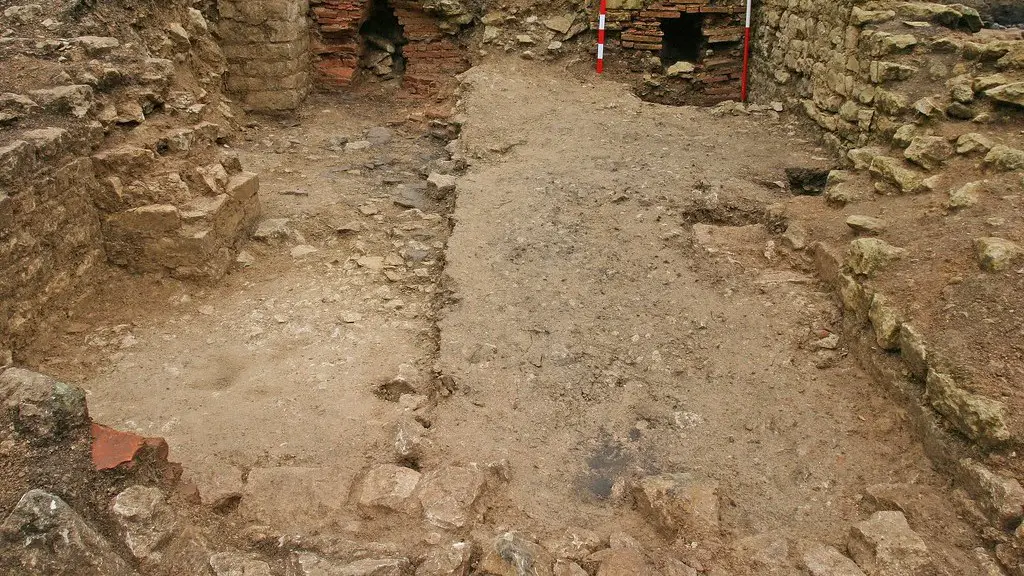Language has been integral to the lives of civilizations throughout history. As such, it is no surprise, language in Ancient Rome was no different. The language that citizens of Ancient Rome spoke on a daily basis was known as Latin. Ancient Rome is considered to be the home of the origin of the Latin language, and over the centuries, it has evolved to become the modern-day Romance languages spoken all around the world. Even though Latin has evolved over the years, it still stands as one of the most important ancient languages that is still their today.
But the history of language in Ancient Rome does not just stop at Latin; other languages were also present in the city, as it was a major hub of trade, religion and culture. During the time of Ancient Rome, many other languages were spoken due to the influx of foreigners coming in to the city. Some of the other languages spoken in Ancient Rome at the time included Greek, Etruscan and other various Italic tongues.
But the Latin language remained the most dominant language in Ancient Rome; it was used in everyday conversations, in literature, literature, and even in government. Latin was very much in style when it came to writing, as it was considered to be the more “sophisticated” language. In fact, Latin was so common that some ancient authors were writing in Latin even if they came from far away places such as Spain or North Africa.
But it wasn’t only in written form that Latin in Ancient Rome was used. It was also spoken by citizens on a daily basis. Latin was used in social circles, during religious ceremonies and even in political debates. Latin was also the official language used in the Roman senate, so it was a language that really connected all citizens of Ancient Rome.
After the collapse of the Roman Empire, Latin went through a period of decline. Latin was no longer spoken in everyday life, and eventually, other languages such as French and Spanish began to dominate the scene. While Latin still exists today, it is no longer the same language that was spoken in Ancient Rome. As a result, the legacy of Latin has been shaped by its evolution over the past couple of centuries.
What’s interesting to note is that the Latin language has had a major influence on the development of many other languages spoken today. While Latin is no longer spoken in everyday life, many of its words and phrases can still be found in some of the most commonly spoken languages. In fact, some linguists have argued that up to 60 percent of the English language is derived from Latin.
Latin’s Impact on Religion and Education
The Latin language in Ancient Rome had a major impact on the development of religion, literature and education during that time. During the Middle Ages, the Catholic Church was a major proponent of Latin; the language of the Church – documents, books, and ceremonies were all written in Latin. As a result, Latin became very popular in the Church, and it was considered to be the language of the educated elite.
Additionally, Latin was not only used for written documents; it was also used in education as the main language for teaching. Latin was a required subject in schools and universities, and this allowed scholars to access a wide range of books, writings and other documents that were written in Latin. Latin was also used in many of the more popular books and plays that were written during that time, and this allowed the Latin language to be spread even further.
Most notably, Latin was seen as a bridge between different cultures and regions. It was the language that connected people of Roman Christianity and allowed them to communicate and understand each other. This connection is what allowed Latin to spread far and wide, and eventually became the most spoken language in the world.
Latin’s Continuing Impact
Despite the dramatic changes in language that have occurred over time, Latin remains an important and influential language even today. Many of its words and phrases can still be found in many of the most commonly spoken languages, and it continues to have a major impact on cultures and societies around the globe.
In addition to its presence in popular languages, Latin has also been widely used in scientific and technical terminology. Latin has been extremely helpful in the field of biology, as many of the terms and phrases used in the field are derived from the Latin language. Latin has also played a significant role in legal terminology, as most of the laws and legal documents contain words and phrases that have originated from Latin.
The influence of Latin can also be seen in literature and the arts. Many famous works of literature, such as Shakespeare’s plays and other famous works, have been written using words and phrases originating from the Latin language. Additionally, Latin is still commonly used in education, as it is often required for study at many universities around the world.
Conclusion: Latin Still Prevails
Despite its decline in popularity, Latin has managed to remain an important language over the centuries. Its influence is still seen today, in popular languages, scientific terminology, literature, and the arts. While it is no longer the most widely spoken language, Latin still stands as one of the most influential and important languages of the ancient world.



